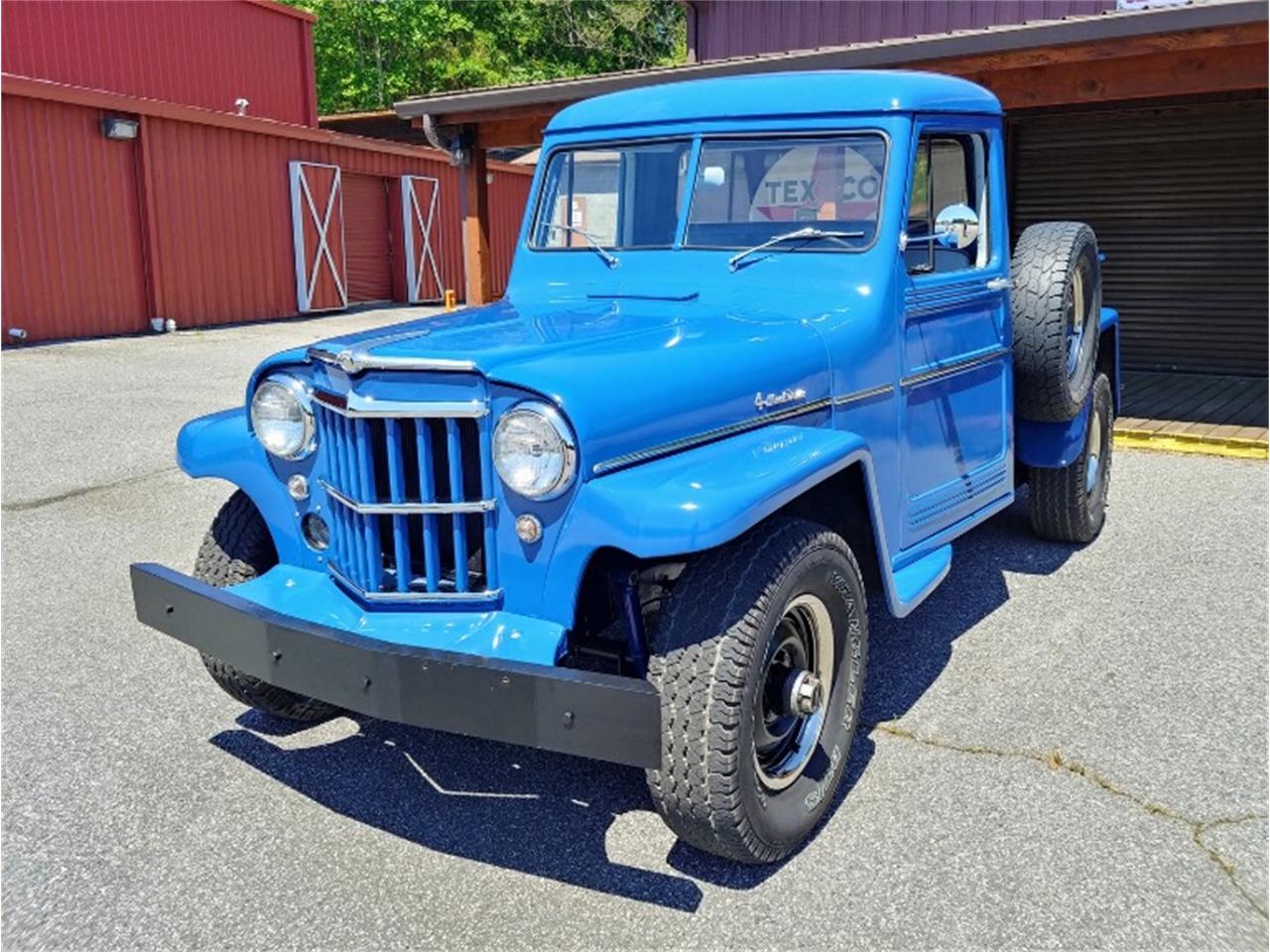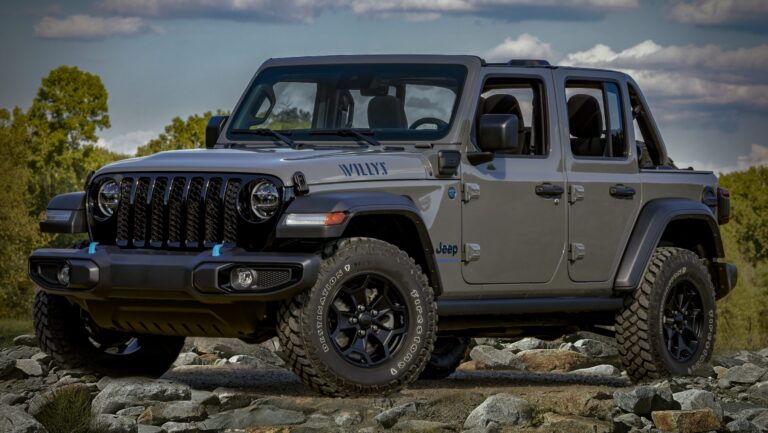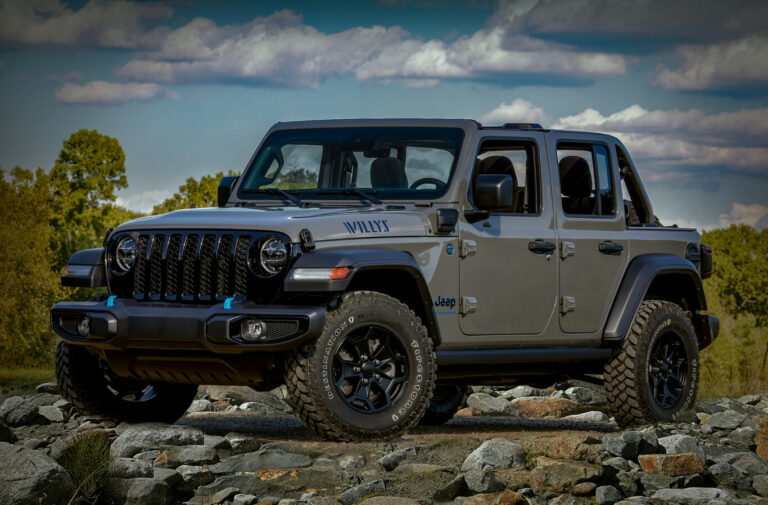Old Willys Jeep For Sale: Your Comprehensive Guide to Acquiring an American Icon
Old Willys Jeep For Sale: Your Comprehensive Guide to Acquiring an American Icon jeeps.truckstrend.com
The call of the open road, the scent of adventure, and the unmistakable rumble of a classic engine often lead enthusiasts down a unique path: the search for an Old Willys Jeep. More than just a vehicle, a Willys Jeep is a tangible piece of American history, a symbol of rugged utility, and an enduring testament to simple, functional design. For sale listings of these venerable machines capture the imagination, offering a chance to own a piece of the past, whether for restoration, off-road recreation, or simply as a cherished collector’s item. This guide will navigate the exciting journey of finding, evaluating, and ultimately acquiring your very own Old Willys Jeep.
The Enduring Appeal of the Willys Jeep
Old Willys Jeep For Sale: Your Comprehensive Guide to Acquiring an American Icon
Born from the crucible of World War II, the Willys MB (and its Ford counterpart, the GPW) became an indispensable tool for the Allied forces, earning the moniker "America’s most useful weapon." Its lightweight, four-wheel-drive capabilities, and remarkable versatility made it an instant legend. After the war, Willys-Overland quickly adapted the military design for civilian use, giving birth to the iconic CJ (Civilian Jeep) series.
Today, the appeal of an Old Willys Jeep remains as strong as ever. It’s a potent mix of nostalgia, mechanical simplicity, and undeniable charm. These vehicles represent an era before complex electronics and intricate safety features, where the connection between driver, machine, and terrain was raw and unfiltered. For many, owning a Willys is about embracing a lifestyle – one of adventure, hands-on tinkering, and a strong sense of community among fellow enthusiasts. They are highly sought after by collectors, restorers, and anyone looking for a unique, go-anywhere vehicle that stands out from the modern automotive landscape.
Types and Models: Which Willys is Right for You?
Understanding the different models is crucial when embarking on your search for an Old Willys Jeep for sale, as each has its own unique characteristics, rarity, and price implications.
- Willys MB / Ford GPW (1941-1945): These are the original "Jeeps" of WWII fame. Highly collectible due to their historical significance, they often command premium prices, especially if original and well-preserved. They are characterized by their flat fenders, recessed headlights, and military-spec features.
- Willys CJ-2A (1945-1949): The first civilian Jeep, often dubbed the "Agri-Jeep." It retained much of the MB’s ruggedness but introduced civilian features like a tailgate, side-mounted spare tire, and larger headlights. A popular choice for those seeking a true classic civilian Willys.
- Willys CJ-3A (1949-1953): An evolution of the CJ-2A, featuring a slightly revised body, a one-piece windshield that could be folded flat, and an updated electrical system. It offered more comfort and refinement while maintaining its workhorse capabilities.
- Willys CJ-3B (1953-1968): Easily identifiable by its distinctive "high hood" design, necessary to accommodate the new F-head engine (the "Hurricane"). This model offers more power and is a popular choice for those wanting a more capable yet still classic Willys.
- Willys CJ-5 (1955-1983): While technically a Willys initially (and later Kaiser and AMC), the early CJ-5s retain the spirit of the original. Larger and more refined than its predecessors, it became a long-running icon, offering a blend of classic looks with improved ergonomics.
- Other Willys Vehicles: While the focus is often on the open-top Jeeps, Willys also produced station wagons, pickups, and even sedans. These offer a different kind of classic utility and may appeal to a broader range of collectors.

Your choice will depend on your budget, desired level of authenticity, and intended use. A WWII MB might be a historical showpiece, while a CJ-2A or CJ-3B could be a fantastic base for a mild restoration and weekend adventures.

Where to Find an Old Willys Jeep For Sale
The hunt for an Old Willys Jeep is part of the adventure. While they aren’t on every street corner, dedicated search strategies will yield results.
- Online Marketplaces: Websites like eBay Motors, Craigslist, and Facebook Marketplace are primary hunting grounds. Search widely, using terms like "Willys Jeep," "CJ-2A," "MB Jeep," etc. Be wary of scams and always verify information.
- Specialized Forums & Classifieds: Websites dedicated to Willys Jeeps and vintage 4x4s (e.g., The CJ2A Page, G503, EarlyCJ5.com) often have "for sale" sections where enthusiasts buy and sell. These communities can also offer invaluable advice and pre-purchase insights.
- Classic Car Dealerships & Brokers: Some dealerships specialize in vintage vehicles and may have Willys Jeeps in stock. While often more expensive, these vehicles are usually vetted and may come with some level of guarantee.
- Auctions: Major auction houses like Mecum, Barrett-Jackson, and smaller local auctions occasionally feature Willys Jeeps. Attend in person if possible to inspect the vehicle thoroughly.
- Word-of-Mouth & Local Ads: Don’t underestimate the power of local connections. Talk to mechanics, classic car club members, and browse local classifieds or community boards. You might uncover a hidden gem from someone who simply wants to see their beloved Jeep go to a good home.

Tip: Set up alerts on online platforms for new listings. Be patient, but be prepared to act quickly when a good opportunity arises.
What to Look For When Buying: A Buyer’s Checklist
Purchasing an Old Willys Jeep for sale requires a meticulous inspection. These are vintage vehicles, and even a "restored" example can hide issues.
Condition Categories:
- Project: Runs poorly or not at all, significant rust, incomplete. Cheapest to buy, most expensive to restore.
- Runner: Drives, but needs substantial work (mechanical, body, electrical). Good for those who enjoy hands-on work and want to drive it while restoring.
- Restored: Fully or partially restored. Varies wildly in quality. Can be expensive upfront, but potentially save on immediate repair costs.
Key Inspection Points:
- Frame Integrity: This is paramount. Inspect the frame rails for rust, cracks, and previous repairs. Pay close attention to areas around the springs and body mounts. Significant frame damage can be a deal-breaker.
- Body Rust: Common areas include the "hat channels" under the tub, floorboards, fenders, cowl, and tailgate. While panels are reproduced, extensive rust means extensive bodywork.
- Engine Condition: Check for leaks, unusual noises (knocking, ticking), smoke from the exhaust (blue for oil, white for coolant, black for fuel). Ask about recent maintenance, oil pressure, and compression.
- Transmission & Drivetrain: Test all gears, including reverse, for smooth engagement. Engage 4×4 high and low ranges. Check U-joints and differentials for excessive play or leaks.
- Electrical System: Ensure all lights, gauges, and accessories work. Look for frayed wires or amateur wiring jobs, which can be fire hazards.
- Brakes: Test pedal feel and stopping power. Inspect lines, cylinders, and drums for leaks or wear.
- Suspension: Look for sagging springs, worn shackles, and damaged shock absorbers.
- Tires: Check for age cracks, tread wear, and matching sizes.
- Paperwork/ Crucial! Ensure the VIN on the title matches the vehicle. Verify the seller is the legal owner. Some older Jeeps may have lost their original titles, complicating registration.
- Originality vs. Modifications: Decide if you want a historically accurate vehicle or one with modern upgrades (e.g., engine swap, power steering). Modifications can affect value and parts availability.
Actionable Insight: Always perform a pre-purchase inspection (PPI) by a trusted mechanic familiar with vintage vehicles, even if it costs a few hundred dollars. This investment can save you thousands down the road. Take it for a test drive, listening for unusual noises and checking how it handles.
Pricing Your Dream Willys: Understanding the Market
The price of an Old Willys Jeep for sale varies dramatically based on several factors. There’s no fixed price, but understanding the market will help you make an informed offer.
- Condition: This is the primary driver. A non-running "project" will be significantly cheaper than a fully restored, concours-quality vehicle.
- Originality: Highly original, matching-numbers vehicles (especially MBs/GPWs) command a premium.
- Model Rarity: Certain models or configurations (e.g., early production runs, specific military variants) can be rarer and thus more valuable.
- Location: Prices can fluctuate regionally due to local demand, climate (less rust in dry climates), and availability.
- Documentation & History: Extensive service records, historical photos, or provenance can add value.
Pricing Guide (Estimates, highly variable):
| Model/Condition | Project (Non-Running/Heavy Rust) | Driver (Running, Needs Work) | Restored (Good Quality) | Concours (Show Quality) |
|---|---|---|---|---|
| Willys MB/GPW | $5,000 – $12,000 | $15,000 – $25,000 | $30,000 – $50,000 | $60,000 – $100,000+ |
| Willys CJ-2A | $3,000 – $8,000 | $8,000 – $15,000 | $18,000 – $30,000 | $35,000 – $50,000+ |
| Willys CJ-3A | $3,000 – $7,000 | $7,000 – $14,000 | $16,000 – $28,000 | $32,000 – $45,000+ |
| Willys CJ-3B | $4,000 – $9,000 | $9,000 – $18,000 | $20,000 – $35,000 | $40,000 – $55,000+ |
| Early CJ-5 | $2,500 – $6,000 | $6,000 – $12,000 | $14,000 – $25,000 | $28,000 – $40,000+ |
Practical Advice: Research recent sales on auction sites and classic car marketplaces. Consult valuation guides like Hagerty or NADA Classic Car Values, but remember these are just guides. Always factor in potential restoration or repair costs into your total budget.
The Buying Process: From Negotiation to Ownership
Once you’ve found a suitable Old Willys Jeep for sale, the buying process begins.
- Negotiation: Be polite but firm. Highlight any issues you found during inspection to justify a lower offer. Have your budget in mind and be prepared to walk away if the price isn’t right.
- Payment: For private sales, a cashier’s check or bank wire transfer is safest. Avoid personal checks or large cash payments. Consider using an escrow service for high-value transactions.
- Shipping/Transport: Unless you’re picking it up locally, arrange for a reputable enclosed or open car transporter. Factor these costs into your budget.
- Title & Registration: Ensure you receive a clean title, properly signed and dated. Understand your state’s specific requirements for registering an antique vehicle. Some states have special plates or relaxed inspection rules for classics.
- Insurance: Obtain classic car insurance, which often offers better coverage and lower premiums than standard auto insurance for older vehicles, recognizing their limited use.
Potential Challenges and Solutions
Owning an Old Willys Jeep is incredibly rewarding, but it comes with its unique set of challenges.
- Rust Remediation: This is almost a given. Learning basic welding or finding a skilled body shop will be necessary. Proactive rust prevention after purchase is key.
- Parts Availability: Surprisingly, parts for most civilian Willys Jeeps are readily available through specialized online retailers (e.g., Kaiser Willys Auto Parts, Walck’s 4WD). Military Jeep parts also have a robust aftermarket.
- Finding Skilled Mechanics: Many modern mechanics are unfamiliar with vintage vehicles. Seek out shops specializing in classics or off-road vehicles, or be prepared to learn basic maintenance yourself.
- High Fuel Consumption & Slow Speeds: These vehicles were not designed for fuel efficiency or highway cruising. Embrace their slower pace and plan routes accordingly.
- Safety: Willys Jeeps lack modern safety features like airbags, crumple zones, or even seatbelts in some early models. Drive defensively, and consider adding aftermarket seatbelts if not present.
- Budget Overruns: Restoration costs can quickly add up. Set a realistic budget and a contingency fund for unexpected issues.
- Community Support: This is a major solution! Join online forums, local Jeep clubs, and attend events. The Willys community is incredibly helpful, offering advice, parts leads, and camaraderie.
Conclusion
The pursuit of an Old Willys Jeep for sale is more than just a transaction; it’s an embarkation on a journey into automotive history and a lifestyle of rugged individualism. By understanding the different models, knowing where to look, conducting thorough inspections, and budgeting realistically, you can navigate the market with confidence. While challenges may arise, the sheer joy of piloting one of these iconic machines, feeling its connection to the past, and becoming part of its enduring legacy makes every effort worthwhile. Your Willys isn’t just a vehicle; it’s a testament to American ingenuity and an open invitation to adventure.
Frequently Asked Questions (FAQ)
Q1: Are Old Willys Jeeps reliable?
A1: With proper maintenance and attention, yes. They are mechanically simple, making them relatively easy to work on. However, being vintage vehicles, they require consistent care and are prone to wear and tear like any older machine.
Q2: Can I daily drive an Old Willys Jeep?
A2: While technically possible, it’s generally not recommended for daily commuting, especially on highways. They lack modern safety features, are slow, and lack creature comforts. They are best suited for recreational use, short trips, or as a secondary vehicle.
Q3: How difficult is it to find parts for an Old Willys Jeep?
A3: Surprisingly, parts availability is quite good, especially for the popular CJ-2A, CJ-3A, and CJ-3B models. There are numerous dedicated aftermarket suppliers specializing in reproduction and NOS (New Old Stock) parts. Military Jeep parts are also well-supported.
Q4: What’s the difference between a Willys MB and a Ford GPW?
A4: Both were virtually identical military Jeeps produced during WWII. The MB was built by Willys-Overland, and the GPW by Ford. Differences are usually subtle and found in component markings or minor manufacturing variations. Both are highly collectible.
Q5: How much does it cost to restore an Old Willys Jeep?
A5: Restoration costs vary wildly depending on the starting condition and desired level of finish. A full, professional, frame-off restoration can easily cost anywhere from $20,000 to $60,000+, sometimes exceeding the vehicle’s market value. A DIY restoration can be cheaper but requires significant time, skill, and tools.
Q6: Do Old Willys Jeeps have titles?
A6: Most do, but some very old examples, especially those found in barns or fields, might have lost their original titles over the decades. Check your state’s regulations regarding obtaining a title for an abandoned or "barn find" vehicle before purchasing one without proper documentation.


